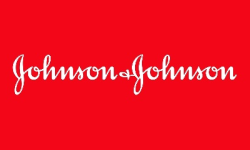
Global Protein Supplements Market by Source (Plant-based, Animal-based), by Product (Powder, RTD), by Distribution Channel (Online Stores, DTC) and Region (North America, Latin America, Europe, Asia Pacific and Middle East & Africa), Forecast To 2028
Summary of the Report
Global protein supplements market was worth USD 18.91 billion in 2020. It is projected to grow at an 8.4% compound annual growth rate (CAGR), between 2021 and 2028. Due to growing health consciousness and the increase in number of fitness centers all over the world, the market is experiencing a boom. The rising popularity of protein supplements among millennials and their desire to improve their health through a healthy diet will drive additional demand over the forecast period. The product demand will rise further due to the increasing reliance on supplements to meet daily nutritional needs. North America, led by the U.S. in 2020, was the largest region market.
The country's positive outlook, increasing consumer acceptance of food supplements, availability of top-notch athletics & fitness infrastructure, and high disposable income are all expected to increase product demand. Whey and casein are extracted from milk, which is the main raw material. Soy is an important raw material for plant-based protein. Variability in prices for raw materials, including soybean and milk, due to supply and demand constraints is expected to cause fluctuations in prices of final products.
Manufacturers are looking for cheaper proteins from animals as the prices of these proteins are on the rise. Plant-based sources such as soy, wheat, rice, canola and wheat are increasingly being used as supplements. Many companies are seeking new opportunities to valorize their ingredients and develop new applications for vicelins.
Increased intake of protein supplements to boost immunity has been a result of the Covid-19 pandemic. Glanbia plc conducted a survey over two weeks in April 2020 to assess the impact of Covid-19 on U.S. consumer spending on nutrition products and food products. The results showed that 21% of respondents ate protein bars to boost their immunity and stay healthy, while 23% ate them in week 2. After the Covid-19 outbreak, RTD protein shakes were also consumed significantly.
Source Insights
In 2020, the animal-based source segment dominated the market and held a 66% revenue share. This segment includes meat and dairy proteins such as egg, beef, casein, egg, chicken, and casein. Because they contain all essential amino acids, animal-based proteins have been considered complete proteins.
In 2020, casein and whey were the most popular animal-based proteins. All grades of whey (concentrates, isolates, hydrolysates, and hydrolysates) have excellent digestibility and amino acid profiles. Hydrolyzed Whey Proteins are more expensive than other whey protein. Therefore, many manufacturers add them to their formulas in smaller amounts. From 2021 to 2028, the fastest CAGR is expected to be in the plant-based source segment.
These products are becoming more popular. These products can be made from many plant sources such as wheat, soybeans, peas, canola and rice. In 2020, soy and wheat were the most popular product sources. Because it contains all nine essential amino acid, soy is most popular. It also contains ingredients such as glutamine, arginaine and BCAA's which aid in muscle recovery.
Product Insights
With a more than 63% share of the global market in 2020, the powder product segment was dominant. Powders can be made from a variety ingredients, including whey protein egg proteins and pea. These powders contain essential micronutrients such as vitamins, minerals, fruits (such as dehydrated vegetables), fibers, additional fats and/or thickeners.
These powders are useful in building and toning muscles, releasing hormones and enzymes, and repairing damaged tissues. The segment is expected to grow due to increased demand from end-users for these powders. The segment will also benefit from the wide variety of products available on the market by different brands.
Over the forecast period, the RTD segment will experience the fastest CAGR at 8.8%. RTD supplements are protein drinks with a specific formulation that can be consumed directly. RTDs are high-protein drinks that can be taken pre-/post-workout, or while on the go. These proteins are easy to absorb and aid in muscle recovery.
Other products include gels, capsules and cakes, as well as cookies and bites. Due to higher demand for protein supplements like RTDs and bars, these products will likely experience slower growth rates than the major proteins.
Application Insights
The largest application segment for sports nutrition was established in 2020. It will see the fastest CAGR during the forecast period due to the wide range of products that can be used in the medical and sports industries. Due to their availability in convenience and supermarkets, sports nutrition products will be more popular than ever. This is due to the wider exposure they have to a wider range of customers including recreational and lifestyle users.
The segment will see an increase in demand for nutritional supplements that promote lean muscle growth, weight loss, performance enhancement, and stamina. The segment will also benefit from an increase in people who engage in physical activities and sports. The industry will face challenges due to the increasing market penetration for energy drinks and sugar-free carbonated soft beverages.
Distribution Channel Insights
Online stores accounted for 59% of the total revenue in 2020. It is expected to grow at the fastest CAGR between 2021 and 2028. Online shopping is a key driver of product sales due to its convenience, affordability, and variety of brands.
The forecasted CAGR for the Supermarkets channel will be 7.6%. Supermarkets sell a wider range of products at lower prices. Due to their popularity, there will be an increase in supermarkets around the world. This should help to boost product sales through these distribution channels.
Direct-to-customer (DTC) is expected to be one the fastest growing distribution channels, with a CAGR 8.3% during the forecast period. To expand their reach in other countries, major companies such as Quest Nutrition, Glanbia and NBTY have invested in direct-to consumer channels. To market their products, companies are creating user-friendly and customized websites.
Small-scale retailers, gyms, and pharmacies are now offering more shelf space to stock protein supplements from different brands as the demand for them is increasing. Cooperatives and small-scale retailers are competing for the market share with big-box stores, discount grocery outlets and supermarket chains.
Regional Insights
North America dominated the market, accounting for more than half of global revenue share in 2020. Because of its high awareness and knowledge about the benefits of the products, the region will continue to hold the dominant position in the future. Europe was the second largest market in 2020. It is expected to see revenue growth of 8.5% during the forecast period. The region's product demand will be driven by a healthier lifestyle and higher disposable income.
Asia Pacific will be the fastest growing regional market with a CAGR 9.1% during the forecast period. Modernization and rising demand for snacking options in emerging economies like India and China are the main drivers of product demand in this region. The industry will continue to grow in Asia Pacific due to a changing consumer lifestyle and rising disposable income.
Market Share Insights & Key Companies
The industry is fragmented, but is expected to grow at a rapid pace due to increasing product demand. Manufacturers in this market are always trying new sources of collagen, from marine collagen to Sacha Inchi. To provide better snack options, manufacturers incorporate egg white proteins into nutrition bars. Glanbia's BevEdge technology was developed in 2017. It allows manufacturers to remove lecithin. This technology can be used for a wide range of animal- or plant-based products such as pea, milk, casein, whey, and so on. The following are some of the major players in the global market for protein supplements:
-
Glanbia plc
-
MusclePharm
-
Abbott
-
CytoSport, Inc.
-
Iovate Health Sciences International, Inc.
-
QuestNutrition
-
The Bountiful Company
-
NOW Foods
-
Transparent Labs
-
Woodbolt Distribution LLC
-
Dymatize Enterprises LLC
-
RSP Nutrition
-
BPI Sports LLC
-
International Dehydrated Foods, Inc.
-
BRF
-
Rousselot
-
Gelita AG
-
Hoogwegt
Up Market Research published a new report titled “Protein Supplements Market research report which is segmented by Source (Plant-based, Animal-based), by Product (Powder, RTD), by Distribution Channel (Online Stores, DTC), By Players/Companies MusclePharm, Iovate Health Sciences International Inc, NOW Foods, CytoSport Inc, International Dehydrated Foods Inc, Dymatize Enterprises LLC, The Bountiful Company, Transparent Labs, BPI Sports LLC, QuestNutrition, Gelita AG, Rousselot, Glanbia plc, BRF, Abbott, Hoogwegt, RSP Nutrition, Woodbolt Distribution LLC”. As per the study the market is expected to grow at a CAGR of XX% in the forecast period.
Report Scope
| Report Attributes | Report Details |
| Report Title | Protein Supplements Market Research Report |
| By Source | Plant-based, Animal-based |
| By Product | Powder, RTD |
| By Distribution Channel | Online Stores, DTC |
| By Companies | MusclePharm, Iovate Health Sciences International Inc, NOW Foods, CytoSport Inc, International Dehydrated Foods Inc, Dymatize Enterprises LLC, The Bountiful Company, Transparent Labs, BPI Sports LLC, QuestNutrition, Gelita AG, Rousselot, Glanbia plc, BRF, Abbott, Hoogwegt, RSP Nutrition, Woodbolt Distribution LLC |
| Regions Covered | North America, Europe, APAC, Latin America, MEA |
| Base Year | 2020 |
| Historical Year | 2018 to 2019 (Data from 2010 can be provided as per availability) |
| Forecast Year | 2028 |
| Number of Pages | 232 |
| Number of Tables & Figures | 163 |
| Customization Available | Yes, the report can be customized as per your need. |
The report covers comprehensive data on emerging trends, market drivers, growth opportunities, and restraints that can change the market dynamics of the industry. It provides an in-depth analysis of the market segments which include products, applications, and competitor analysis.

Global Protein Supplements Market Report Segments:
The market is segmented by Source (Plant-based, Animal-based), by Product (Powder, RTD), by Distribution Channel (Online Stores, DTC).
Protein Supplements Market research report delivers a close watch on leading competitors with strategic analysis, micro and macro market trend and scenarios, pricing analysis and a holistic overview of the market situations in the forecast period. It is a professional and a detailed report focusing on primary and secondary drivers, market share, leading segments and geographical analysis. Further, key players, major collaborations, merger & acquisitions along with trending innovation and business policies are reviewed in the report.
Key Benefits for Industry Participants & Stakeholders:
- Industry drivers, restraints, and opportunities covered in the study
- Neutral perspective on the market performance
- Recent industry trends and developments
- Competitive landscape & strategies of key players
- Potential & niche segments and regions exhibiting promising growth covered
- Historical, current, and projected market size, in terms of value
- In-depth analysis of the Protein Supplements Market
Overview of the regional outlook of the Protein Supplements Market:
Based on region, the market is segmented into North America, Europe, Asia Pacific, Latin America and Middle East & Africa (MEA). North America region is further bifurcated into countries such as U.S., and Canada. The Europe region is further categorized into U.K., France, Germany, Italy, Spain, Russia, and Rest of Europe. Asia Pacific is further segmented into China, Japan, South Korea, India, Australia, South East Asia, and Rest of Asia Pacific. Latin America region is further segmented into Brazil, Mexico, and Rest of Latin America, and the MEA region is further divided into GCC, Turkey, South Africa, and Rest of MEA.

Highlights of The Protein Supplements Market Report:
- The market structure and projections for the coming years.
- Drivers, restraints, opportunities, and current trends of Protein Supplements Market.
- Historical data and forecast.
- Estimations for the forecast period 2028.
- Developments and trends in the market.
1. Plant-based
2. Animal-based
7. By Product:1. Powder
2. RTD
8. By Distribution Channel:1. Online Stores
2. DTC
- Market scenario by region, sub-region, and country.
- Market share of the market players, company profiles, product specifications, SWOT analysis, and competitive landscape.
- Analysis regarding upstream raw materials, downstream demand, and current market dynamics.
- Government Policies, Macro & Micro economic factors are also included in the report.
We have studied the Protein Supplements Market in 360 degrees via. both primary & secondary research methodologies. This helped us in building an understanding of the current market dynamics, supply-demand gap, pricing trends, product preferences, consumer patterns & so on. The findings were further validated through primary research with industry experts & opinion leaders across countries. The data is further compiled & validated through various market estimation & data validation methodologies. Further, we also have our in-house data forecasting model to predict market growth up to 2028.
How you may use our products:
- Correctly Positioning New Products
- Market Entry Strategies
- Business Expansion Strategies
- Consumer Insights
- Understanding Competition Scenario
- Product & Brand Management
- Channel & Customer Management
- Identifying Appropriate Advertising Appeals

Reasons to Purchase the Protein Supplements Market Report:
- The report includes a plethora of information such as market dynamics scenario and opportunities during the forecast period
- Segments and sub-segments include quantitative, qualitative, value (USD Million,) and volume (Units Million) data.
- Regional, sub-regional, and country level data includes the demand and supply forces along with their influence on the market.
- The competitive landscape comprises share of key players, new developments, and strategies in the last three years.
- Comprehensive companies offering products, relevant financial information, recent developments, SWOT analysis, and strategies by these players.
Chapter 2 Assumptions and Acronyms Used
Chapter 3 Research Methodology
Chapter 4 Protein Supplements Market Overview
4.1 Introduction
4.1.1 Market Taxonomy
4.1.2 Market Definition
4.1.3 Macro-Economic Factors Impacting the Market Growth
4.2 Protein Supplements Market Dynamics
4.2.1 Market Drivers
4.2.2 Market Restraints
4.2.3 Market Opportunity
4.3 Protein Supplements Market - Supply Chain Analysis
4.3.1 List of Key Suppliers
4.3.2 List of Key Distributors
4.3.3 List of Key Consumers
4.4 Key Forces Shaping the Protein Supplements Market
4.4.1 Bargaining Power of Suppliers
4.4.2 Bargaining Power of Buyers
4.4.3 Threat of Substitution
4.4.4 Threat of New Entrants
4.4.5 Competitive Rivalry
4.5 Global Protein Supplements Market Size & Forecast, 2018-2028
4.5.1 Protein Supplements Market Size and Y-o-Y Growth
4.5.2 Protein Supplements Market Absolute $ Opportunity
Chapter 5 Global Protein Supplements Market Analysis and Forecast by Source
5.1 Introduction
5.1.1 Key Market Trends & Growth Opportunities by Source
5.1.2 Basis Point Share (BPS) Analysis by Source
5.1.3 Absolute $ Opportunity Assessment by Source
5.2 Protein Supplements Market Size Forecast by Source
5.2.1 Plant-based
5.2.2 Animal-based
5.3 Market Attractiveness Analysis by Source
Chapter 6 Global Protein Supplements Market Analysis and Forecast by Product
6.1 Introduction
6.1.1 Key Market Trends & Growth Opportunities by Product
6.1.2 Basis Point Share (BPS) Analysis by Product
6.1.3 Absolute $ Opportunity Assessment by Product
6.2 Protein Supplements Market Size Forecast by Product
6.2.1 Powder
6.2.2 RTD
6.3 Market Attractiveness Analysis by Product
Chapter 7 Global Protein Supplements Market Analysis and Forecast by Distribution Channel
7.1 Introduction
7.1.1 Key Market Trends & Growth Opportunities by Distribution Channel
7.1.2 Basis Point Share (BPS) Analysis by Distribution Channel
7.1.3 Absolute $ Opportunity Assessment by Distribution Channel
7.2 Protein Supplements Market Size Forecast by Distribution Channel
7.2.1 Online Stores
7.2.2 DTC
7.3 Market Attractiveness Analysis by Distribution Channel
Chapter 8 Global Protein Supplements Market Analysis and Forecast by Region
8.1 Introduction
8.1.1 Key Market Trends & Growth Opportunities by Region
8.1.2 Basis Point Share (BPS) Analysis by Region
8.1.3 Absolute $ Opportunity Assessment by Region
8.2 Protein Supplements Market Size Forecast by Region
8.2.1 North America
8.2.2 Europe
8.2.3 Asia Pacific
8.2.4 Latin America
8.2.5 Middle East & Africa (MEA)
8.3 Market Attractiveness Analysis by Region
Chapter 9 Coronavirus Disease (COVID-19) Impact
9.1 Introduction
9.2 Current & Future Impact Analysis
9.3 Economic Impact Analysis
9.4 Government Policies
9.5 Investment Scenario
Chapter 10 North America Protein Supplements Analysis and Forecast
10.1 Introduction
10.2 North America Protein Supplements Market Size Forecast by Country
10.2.1 U.S.
10.2.2 Canada
10.3 Basis Point Share (BPS) Analysis by Country
10.4 Absolute $ Opportunity Assessment by Country
10.5 Market Attractiveness Analysis by Country
10.6 North America Protein Supplements Market Size Forecast by Source
10.6.1 Plant-based
10.6.2 Animal-based
10.7 Basis Point Share (BPS) Analysis by Source
10.8 Absolute $ Opportunity Assessment by Source
10.9 Market Attractiveness Analysis by Source
10.10 North America Protein Supplements Market Size Forecast by Product
10.10.1 Powder
10.10.2 RTD
10.11 Basis Point Share (BPS) Analysis by Product
10.12 Absolute $ Opportunity Assessment by Product
10.13 Market Attractiveness Analysis by Product
10.14 North America Protein Supplements Market Size Forecast by Distribution Channel
10.14.1 Online Stores
10.14.2 DTC
10.15 Basis Point Share (BPS) Analysis by Distribution Channel
10.16 Absolute $ Opportunity Assessment by Distribution Channel
10.17 Market Attractiveness Analysis by Distribution Channel
Chapter 11 Europe Protein Supplements Analysis and Forecast
11.1 Introduction
11.2 Europe Protein Supplements Market Size Forecast by Country
11.2.1 Germany
11.2.2 France
11.2.3 Italy
11.2.4 U.K.
11.2.5 Spain
11.2.6 Russia
11.2.7 Rest of Europe
11.3 Basis Point Share (BPS) Analysis by Country
11.4 Absolute $ Opportunity Assessment by Country
11.5 Market Attractiveness Analysis by Country
11.6 Europe Protein Supplements Market Size Forecast by Source
11.6.1 Plant-based
11.6.2 Animal-based
11.7 Basis Point Share (BPS) Analysis by Source
11.8 Absolute $ Opportunity Assessment by Source
11.9 Market Attractiveness Analysis by Source
11.10 Europe Protein Supplements Market Size Forecast by Product
11.10.1 Powder
11.10.2 RTD
11.11 Basis Point Share (BPS) Analysis by Product
11.12 Absolute $ Opportunity Assessment by Product
11.13 Market Attractiveness Analysis by Product
11.14 Europe Protein Supplements Market Size Forecast by Distribution Channel
11.14.1 Online Stores
11.14.2 DTC
11.15 Basis Point Share (BPS) Analysis by Distribution Channel
11.16 Absolute $ Opportunity Assessment by Distribution Channel
11.17 Market Attractiveness Analysis by Distribution Channel
Chapter 12 Asia Pacific Protein Supplements Analysis and Forecast
12.1 Introduction
12.2 Asia Pacific Protein Supplements Market Size Forecast by Country
12.2.1 China
12.2.2 Japan
12.2.3 South Korea
12.2.4 India
12.2.5 Australia
12.2.6 South East Asia (SEA)
12.2.7 Rest of Asia Pacific (APAC)
12.3 Basis Point Share (BPS) Analysis by Country
12.4 Absolute $ Opportunity Assessment by Country
12.5 Market Attractiveness Analysis by Country
12.6 Asia Pacific Protein Supplements Market Size Forecast by Source
12.6.1 Plant-based
12.6.2 Animal-based
12.7 Basis Point Share (BPS) Analysis by Source
12.8 Absolute $ Opportunity Assessment by Source
12.9 Market Attractiveness Analysis by Source
12.10 Asia Pacific Protein Supplements Market Size Forecast by Product
12.10.1 Powder
12.10.2 RTD
12.11 Basis Point Share (BPS) Analysis by Product
12.12 Absolute $ Opportunity Assessment by Product
12.13 Market Attractiveness Analysis by Product
12.14 Asia Pacific Protein Supplements Market Size Forecast by Distribution Channel
12.14.1 Online Stores
12.14.2 DTC
12.15 Basis Point Share (BPS) Analysis by Distribution Channel
12.16 Absolute $ Opportunity Assessment by Distribution Channel
12.17 Market Attractiveness Analysis by Distribution Channel
Chapter 13 Latin America Protein Supplements Analysis and Forecast
13.1 Introduction
13.2 Latin America Protein Supplements Market Size Forecast by Country
13.2.1 Brazil
13.2.2 Mexico
13.2.3 Rest of Latin America (LATAM)
13.3 Basis Point Share (BPS) Analysis by Country
13.4 Absolute $ Opportunity Assessment by Country
13.5 Market Attractiveness Analysis by Country
13.6 Latin America Protein Supplements Market Size Forecast by Source
13.6.1 Plant-based
13.6.2 Animal-based
13.7 Basis Point Share (BPS) Analysis by Source
13.8 Absolute $ Opportunity Assessment by Source
13.9 Market Attractiveness Analysis by Source
13.10 Latin America Protein Supplements Market Size Forecast by Product
13.10.1 Powder
13.10.2 RTD
13.11 Basis Point Share (BPS) Analysis by Product
13.12 Absolute $ Opportunity Assessment by Product
13.13 Market Attractiveness Analysis by Product
13.14 Latin America Protein Supplements Market Size Forecast by Distribution Channel
13.14.1 Online Stores
13.14.2 DTC
13.15 Basis Point Share (BPS) Analysis by Distribution Channel
13.16 Absolute $ Opportunity Assessment by Distribution Channel
13.17 Market Attractiveness Analysis by Distribution Channel
Chapter 14 Middle East & Africa (MEA) Protein Supplements Analysis and Forecast
14.1 Introduction
14.2 Middle East & Africa (MEA) Protein Supplements Market Size Forecast by Country
14.2.1 Saudi Arabia
14.2.2 South Africa
14.2.3 UAE
14.2.4 Rest of Middle East & Africa (MEA)
14.3 Basis Point Share (BPS) Analysis by Country
14.4 Absolute $ Opportunity Assessment by Country
14.5 Market Attractiveness Analysis by Country
14.6 Middle East & Africa (MEA) Protein Supplements Market Size Forecast by Source
14.6.1 Plant-based
14.6.2 Animal-based
14.7 Basis Point Share (BPS) Analysis by Source
14.8 Absolute $ Opportunity Assessment by Source
14.9 Market Attractiveness Analysis by Source
14.10 Middle East & Africa (MEA) Protein Supplements Market Size Forecast by Product
14.10.1 Powder
14.10.2 RTD
14.11 Basis Point Share (BPS) Analysis by Product
14.12 Absolute $ Opportunity Assessment by Product
14.13 Market Attractiveness Analysis by Product
14.14 Middle East & Africa (MEA) Protein Supplements Market Size Forecast by Distribution Channel
14.14.1 Online Stores
14.14.2 DTC
14.15 Basis Point Share (BPS) Analysis by Distribution Channel
14.16 Absolute $ Opportunity Assessment by Distribution Channel
14.17 Market Attractiveness Analysis by Distribution Channel
Chapter 15 Competition Landscape
15.1 Protein Supplements Market: Competitive Dashboard
15.2 Global Protein Supplements Market: Market Share Analysis, 2019
15.3 Company Profiles (Details – Overview, Financials, Developments, Strategy)
15.3.1 MusclePharm
15.3.2 Iovate Health Sciences International Inc
15.3.3 NOW Foods
15.3.4 CytoSport Inc
15.3.5 International Dehydrated Foods Inc
15.3.6 Dymatize Enterprises LLC
15.3.7 The Bountiful Company
15.3.8 Transparent Labs
15.3.9 BPI Sports LLC
15.3.10 QuestNutrition
15.3.11 Gelita AG
15.3.12 Rousselot
15.3.13 Glanbia plc
15.3.14 BRF
15.3.15 Abbott
15.3.16 Hoogwegt
15.3.17 RSP Nutrition
15.3.18 Woodbolt Distribution LLC
The global Protein Supplements market has been segmented based on
By Source
- Plant-based
- Animal-based
- Powder
- RTD
- Online Stores
- DTC
- Asia Pacific
- North America
- Latin America
- Europe
- Middle East & Africa
- MusclePharm
- Iovate Health Sciences International Inc
- NOW Foods
- CytoSport Inc
- International Dehydrated Foods Inc
- Dymatize Enterprises LLC
- The Bountiful Company
- Transparent Labs
- BPI Sports LLC
- QuestNutrition
- Gelita AG
- Rousselot
- Glanbia plc
- BRF
- Abbott
- Hoogwegt
- RSP Nutrition
- Woodbolt Distribution LLC
Related Reports
Some other reports from this category!



















